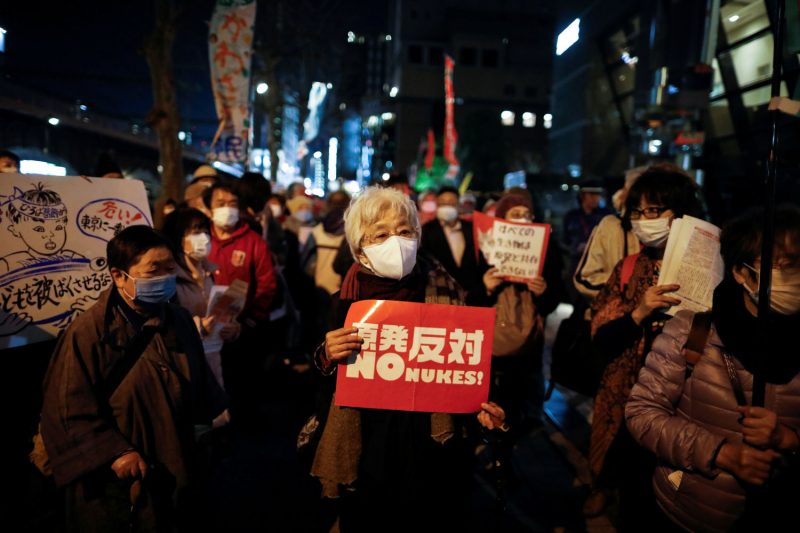(ATF) Japan’s Fukushima prefecture is re-branding itself from a textbook example of what can go wrong with nuclear power to becoming a renewables and even green hydrogen leader.
March 11 marked the 10th anniversary of the record breaking 9.1 magnitude earthquake off Japan, the fourth largest globally since at least 1900, that created a series of tsunamis that slammed the country’s northeast coast, including the Fukushima Daiichi nuclear power plant.
As a result, the plant’s cooling system lost power, resulting in a meltdown in three reactors, contaminating surrounding areas and forcing the evacuation of more than 160,000 residents.
The disaster eventually caused Japan to shut down its remaining 50-plus nuclear facilities needed for power generation due to both safety concerns and public pressure. These concerns not only rippled across a weary Japan, but across nearby Taiwan that halted construction of a major nuclear power plant by Taipower that was already 80% complete.
Countries across the globe joined in the anti-nuclear power push, ranging from France to Germany, Italy, Spain, Switzerland and back to Asia again. China, however, the world’s largest energy consumer, is still building out its nuclear power sector. Earlier this year, the first of two new reactors at a nuclear power plant entered commercial operation, becoming the country’s 50th operating reactor, according to the China Nuclear Energy Association.
The Fukushima accident became the second-most serious nuclear accident in history, behind the Chernobyl disaster in Ukraine in the former USSR some 25 years earlier. It also made Japan scramble to find energy replacements for lost nuclear power, turning to a major liquefied natural gas (LNG) procurement ramp up on the then-nascent LNG spot market in Asia, with corresponding record high prices that created massive trade deficit problems for Tokyo.
RENEWABLES PIVOT
To help Fukushima prefecture, with a population of just under 2 million people, recover both economically as well as offsetting the loss of power generation from the idled nuclear facility, the government put in place a massive renewables push, including solar, wind, bio-mass and most recently green hydrogen.
This renewables push not only has the potential to help Japan reach its 2050 carbon neutral goal, but also help build out its green hydrogen sector, including hydrogen fuel cell vehicles.
Last year, a Toshiba developed hydrogen plant opened in Namie (a Fukushima town evacuated after the 2011 meltdown) using an adjoining solar farm to power the process. A new transmission line will eventually add some 36 megawatts of wind-generated power, helping Fukushima become 100% renewable by 2040.
Toyota has also increased its interest in Fukushima. Last week, Akio Toyoda, the company’s president, visited the Fukushima Hydrogen Energy Research Field (FH2R) in Namie and pledged several green hydrogen pilot projects that could help the Japanese auto sector make a so-called hydrogen pivot.
“It is important to link the whole process of production, distribution and consumption in order to realise a hydrogen society. We, the car industry as a consumer, are planning to use our expertise and join the government and Fukushima in the effort,” he said.
MULTI-USE UNIT
FHR2, a renewables-powered, 10-MW hydrogen production unit, was launched in 2018, with plans to be completed this year. Since it will largely be powered from an adjacent 20-MW solar power generation facility to conduct water electrolysis it’s considered green hydrogen. The plant’s hydrogen will be used in a number of capacities, including powering stationary hydrogen fuel cell systems, mobility devices, as well as fuel cell cars and buses.
This fits Tokyo’s aim of building out not only more domestic hydrogen infrastructure but also a global hydrogen value chain, similar in many aspects to the country’s massive global oil and gas investment push over the last 50 years to make up for its natural resource deficiency.
Japan is already leading the Asia-Pacific region in total number of hydrogen filling stations with 142 at the end of 2020, followed by China with 69 and South Korea with 60. China’s hydrogen stations are used almost exclusively for the refuelling of buses or truck fleets.
However, last month Chinese state-run oil major Sinopec announced a major green hydrogen initiative to build as many as 1,000 hydrogen stations nationwide by 2025, with the country’s other two state-run oil and gas majors likely to follow suit in some fashion.
US TO BOOST INFRASTRUCTURE
As a comparison, all of North America had only 75 operational hydrogen refuelling stations, with 49 located California, at the end of last year. However, given US President Joe Biden’s major renewables reset in the country, that number will likely escalate over the next few years.
Despite Japan’s hydrogen initiatives, it could still take more time for consumers to become accustomed to hydrogen powered vehicles. Toyota’s first hydrogen powered vehicle, the Mirai sedan, launched in 2014, received lukewarm reception with around 11,000 sold globally and only 3,700 in Japan. Undeterred, the legendary car maker just released a new and improved Mirai sedan.
Yoshikazu Tanaka, the Toyota chief engineer involved in developing the Mirai, said the company hoped to lure buyers because of important improvements in the new version.
“We have bolstered its attractiveness by increasing the hydrogen fuel capacity, extending the driving range and strengthening the engine power,” he said. Analysts, however, say that hydrogen fuel cell vehicles still need more government backing to gain wider appeal.
























